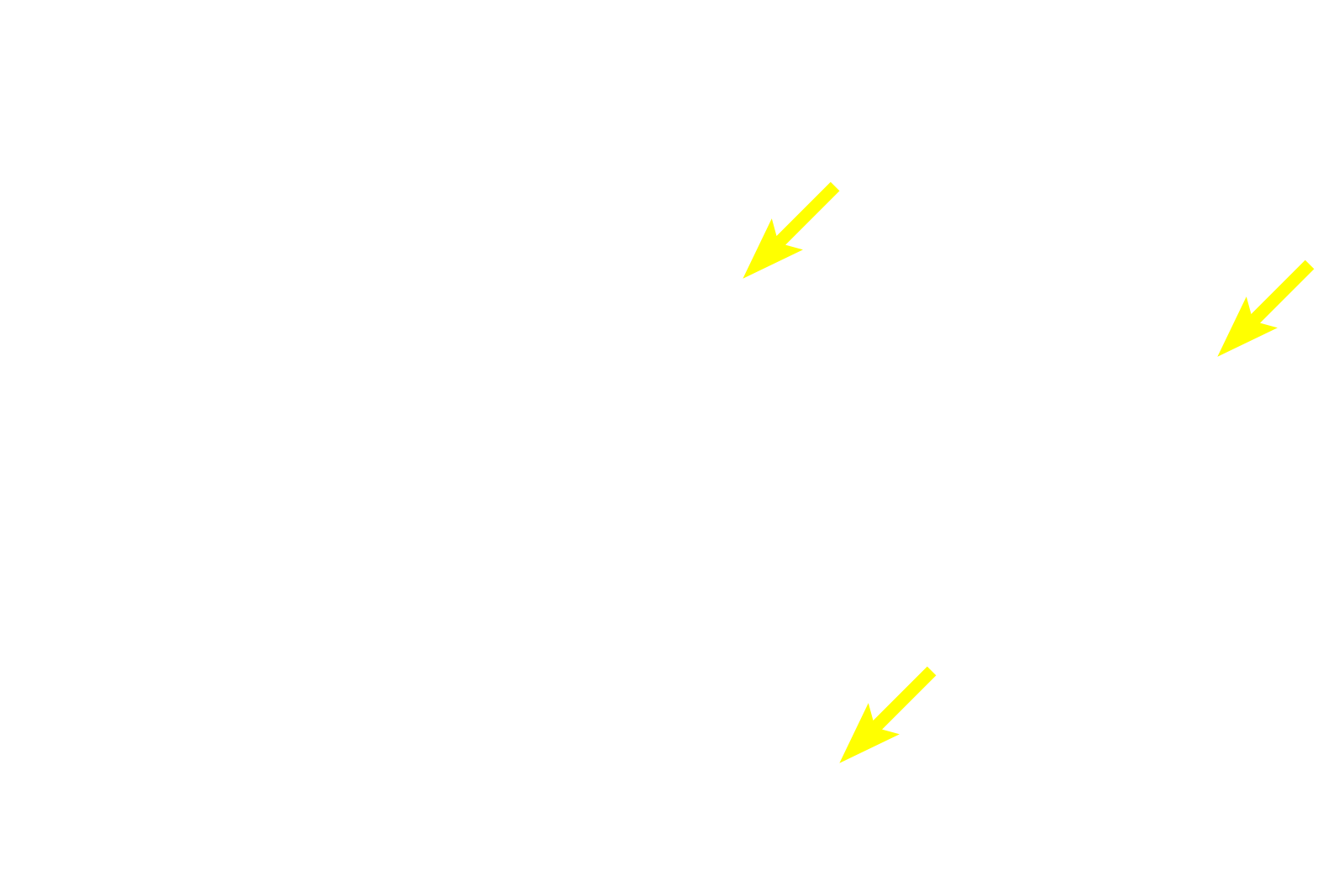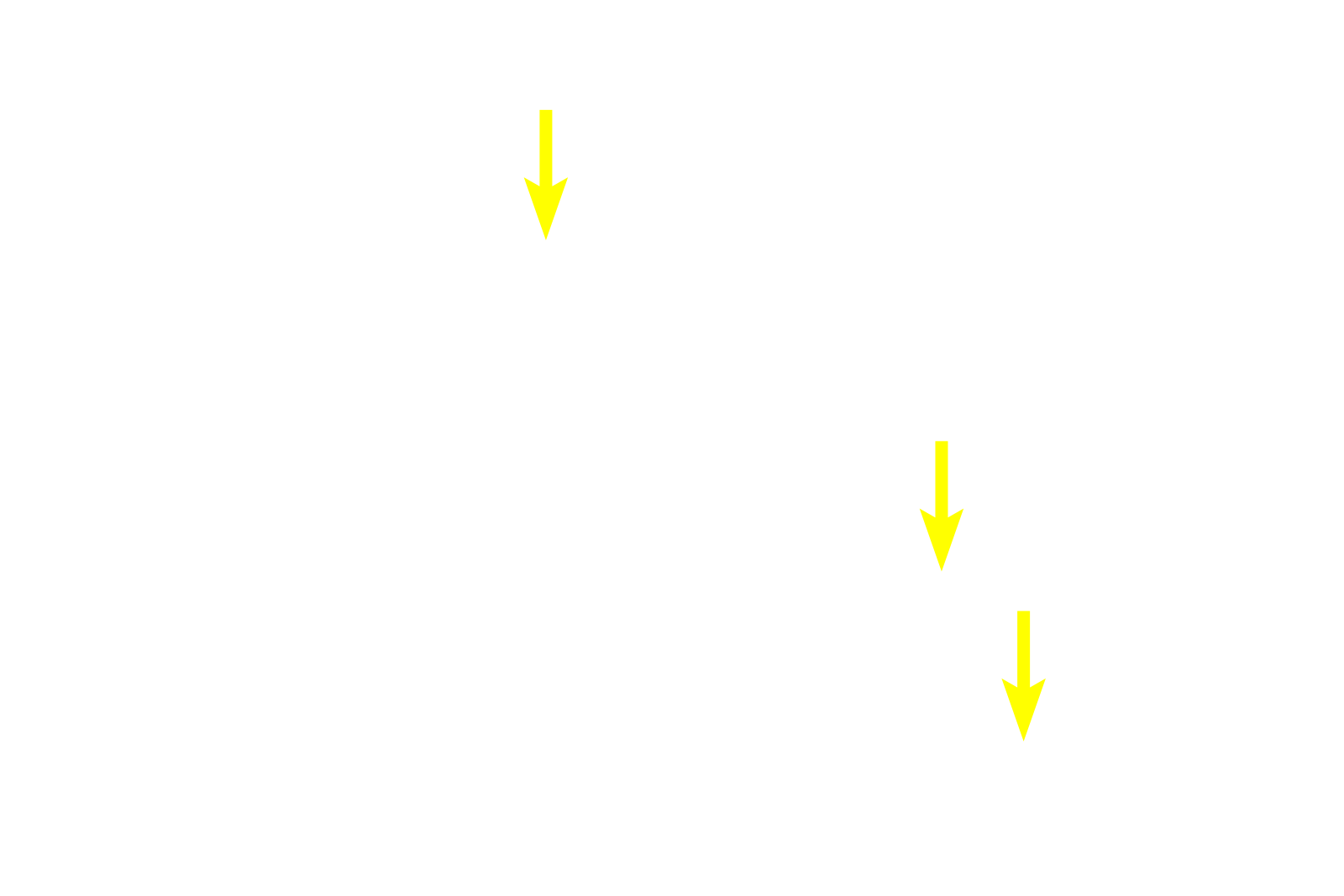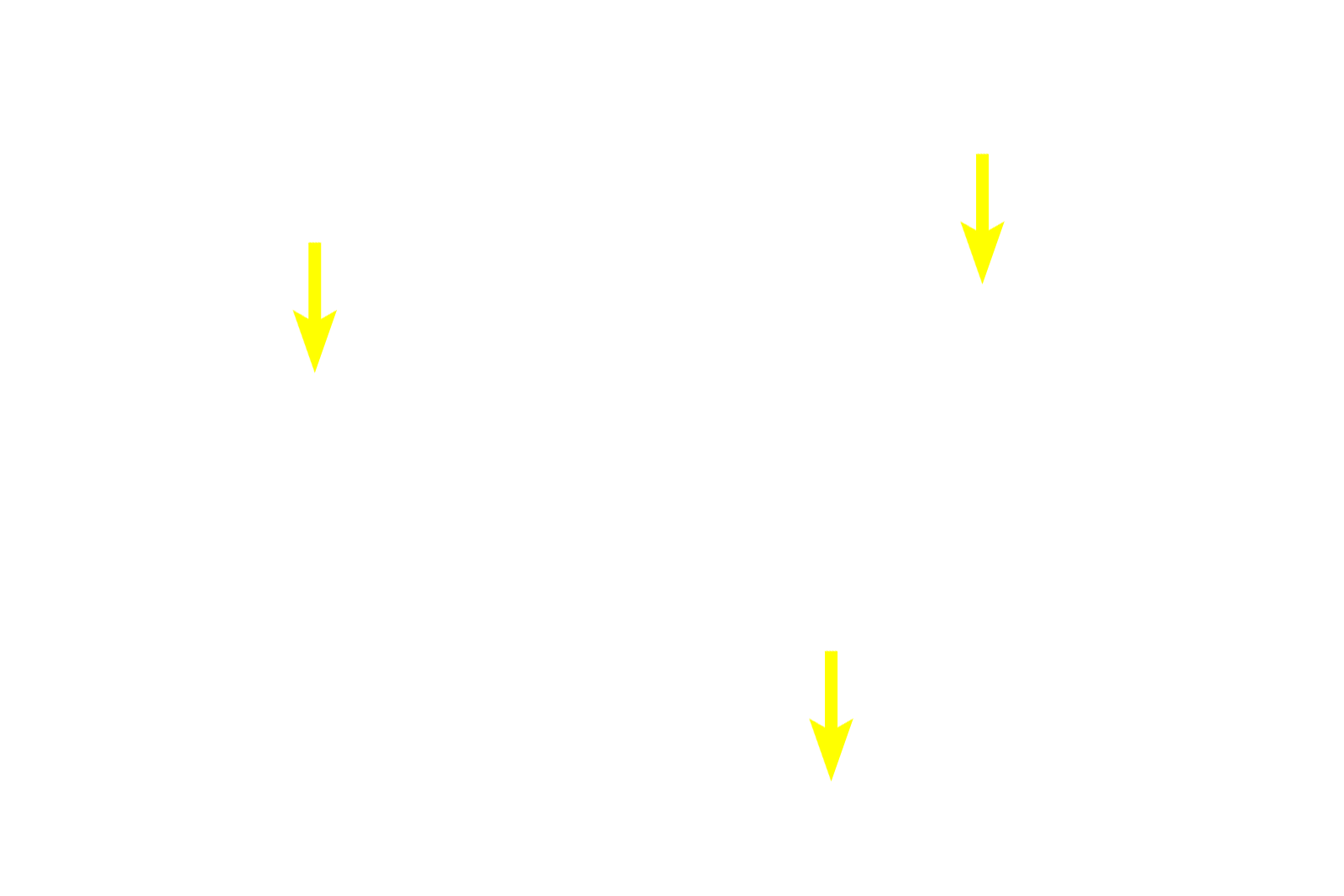
Pars distalis
Basophils and acidophils are identified by the staining affinities of their secretory granules for either hematoxylin (basophils) or eosin (acidophils). Acidophils, the major cell type in this image, consist of growth hormone-secreting somatotropes and prolactin-secreting mammotropes. These two cell types cannot be distinguished by routine hematoxylin and eosin staining. 1000x

Basophils
Basophils and acidophils are identified by the staining affinities of their secretory granules for either hematoxylin (basophils) or eosin (acidophils). Acidophils, the major cell type in this image, consist of growth hormone-secreting somatotropes and prolactin-secreting mammotropes. These two cell types cannot be distinguished by routine hematoxylin and eosin staining. 1000x

Acidophils
Basophils and acidophils are identified by the staining affinities of their secretory granules for either hematoxylin (basophils) or eosin (acidophils). Acidophils, the major cell type in this image, consist of growth hormone-secreting somatotropes and prolactin-secreting mammotropes. These two cell types cannot be distinguished by routine hematoxylin and eosin staining. 1000x

Chromophobes
Basophils and acidophils are identified by the staining affinities of their secretory granules for either hematoxylin (basophils) or eosin (acidophils). Acidophils, the major cell type in this image, consist of growth hormone-secreting somatotropes and prolactin-secreting mammotropes. These two cell types cannot be distinguished by routine hematoxylin and eosin staining. 1000x

Capillaries
Basophils and acidophils are identified by the staining affinities of their secretory granules for either hematoxylin (basophils) or eosin (acidophils). Acidophils, the major cell type in this image, consist of growth hormone-secreting somatotropes and prolactin-secreting mammotropes. These two cell types cannot be distinguished by routine hematoxylin and eosin staining. 1000x

Location of Golgi body >
The large Golgi apparatus present in these cells displaces the secretory granules, leaving a pale region. The Golgi is responsible for assembling and packaging the secretory granules.